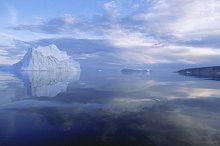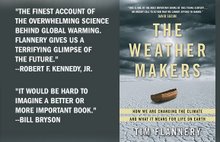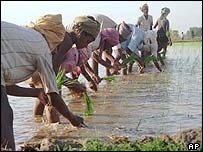PREAMBLE: Need for Objectivity in light of Japan’s Emergency.
The situation of Japan, following the world’s fifth largest recorded earthquake since 1900 and resulting tsunami, is catastrophic. It is possible that tens of thousands may have drowned, swept away with their coastal infrastructure. Hundreds of thousands of people, perhaps millions, have been displaced and lost family members and their livelihoods.
The catastrophe has given rise to a new emergency as a result of damage to several nuclear power plants. There is a risk of reactor meltdown. Containment efforts now underway are in a dynamic phase, with changes in status reported on a continuous basis.
Although there appears to have been comprehensive coverage of Japan’s humanitarian disaster, the global media is also monitoring this sub-story with an intensity that may turn out to be disproportionate to the overall catastrophe, or perhaps not, giving time to both nuclear power proponents and adversaries to vent their opportunistic viewpoints.
Even some mainstream media in Canada (e.g., CTV 10 pm News, March 14 Pacific DST) appeared to hype this aspect of the disaster, seemingly appealing to populist fear about nuclear power, rather than objectively placing this in the perspective of the far greater human impact of a massive earthquake and tsunami. American PBS Newshour at 6pm was more balanced.
In light of these observations, we searched for up to date sources of scientific information on nuclear safety, and selected as a primary reference for this issue a recent Organization for Economic Cooperation and Development (OECD) report Comparing Nuclear Accident Risks with Those from Other Energy Sources [1]. We refer readers to it (reference below) for a policy-relevant technical document, written for intelligent lay readers.
A RATIONAL APPROACH TO ENERGY CHOICES
Some Observations (our italics added for selective emphasis)
As the 2010 OECD report notes, many countries are reconsidering the role of nuclear energy in their energy mix, as a means to alleviate the concerns over climate change, security of energy supply and the price and price volatility of fossil fuels. However, nuclear energy remains a contentious technology in some political circles and in the minds of many members of the public.
One of the common themes of concern is the safety of nuclear power plants. However a rational choice of energy sources should involve an even handed comparison of risks across the various energy chains available.
There is little value in rejecting one source if that which replaces it presents even greater hazards. The purpose of the OECD document therefore, is said to provide energy policy makers with quality data and information that will enable understanding of how accident risks are managed in nuclear plants and also to provide a rational analysis of the relative risks presented by the various major energy chains used for the production of electricity.
The OECD report presented data compiled by the Paul Scherrer Institute (Switzerland) on accidents causing five or more prompt deaths in the energy industry between 1969 and 2000, during which there were 1870 such severe accidents globally resulting in 81,258 deaths. The only severe accident at a nuclear power plant (Chernobyl) killed 31 plant and emergency workers.
Regarding long range health impacts in areas affected by Chernobyl, one set of OECD estimates project up to 33,000 eventual deaths over 70 years, using a particular assumption. However, the assumption is that of a "linear dose response relationship with no threshold" (LNT), and if the same logic is applied to background radiation (normally experienced by all people) … "for the 70 years…the collective dose from natural background would be… 1500 times larger, therefore theoretically causing 1500 times as many fatalities (~50 million) due to exposure to natural background radiation…” Clearly the validity of the LNT model is controversial at best, and some consider it discredited.
With nuclear accidents being so rare, and data on resulting adverse health and safety outcomes therefore being so limited, the OECD analysis also uses an alternative technique called “probabilistic safety analysis”. Applied to a Swiss nuclear power plant, this shows a 1 in 1 million-year probability of an accident serious enough to cause 2000 latent fatalities. Overall, the likelihood of an accident and radiological release at a new nuclear plant is 1600 times lower than it was when the first reactors were built.
Interestingly, latent deaths from accidents in non-nuclear energy sources were not included, although premature deaths caused by particulates from fossil fuel generation are estimated at around 288,000 per year worldwide.
Translation: Consider this in terms of over a million dead every four years from inhaling the emissions of burning fossil fuel!
From such OECD analyses and observations therefore, it is difficult not to recognize and concur with their observation that...
"Overall, accident-related deaths from (nuclear) energy use are much smaller than those that result from the health effects of fossil fuel emissions, but they attract much more media and public attention."
Discussion
The US Academy of Sciences, like scientific advisory bodies of other nations, has recognized for decades that all energy systems entail some health, environmental, or socio-political risks. But there is considerable difference among various energy systems in the magnitude, timing, and nature of these associated risks. It is this difference that allows (and requires) a degree of choice,…with regard to selecting energy alternatives.[2]
However, Japan’s current nuclear power plant emergency is being utilized by at least some of the world media to focus concern on the global expansion of nuclear power as an alternative to fossil fuel. Although there may be some special interests also involved in this position, such concerns have a completely legitimate foundation, especially in Japan, the only country ever to have experienced the human tragedy of nuclear bombing. Nonetheless, issues surrounding the development of nuclear power are highly complex and choices between nuclear and alternative sources should involve relevant comparisons of risks and benefits.
The body of up to date scientific evidence presented in the referenced OECD report indicates that nuclear power may be the safest available option to meet the energy demands of developed and developing nations.[1] By contrast, based on the evidence, fossil fuels are actually the most hazardous, whether through the perspective of human health (short or long term) and environmental impacts e.g., global warming due to greenhouse gas emissions. Hydroelectricity appears safe (notwithstanding that the worst energy-related accident is the Banqiao/Shimantan dam failure in China, when ~30,000 people were killed in 1975), but the reality is that most hydro opportunities are already exploited. The potential of biofuels, wind and tidal power, also appear to have significant trade-offs (e.g., crops for food versus fuel; environmental and aestheic impacts of wind power; fish migration, bird habitat disruption, silt build up with regard to tidal power); however, there may be more potential in these options than currently realized as technologies advance, and this may be true also for solar and geothermal power.
Conclusion
In the end, it is obvious that risks are associated with every source of energy. And of course, in each setting decisions must be made as to the viability of available choices. However, rather than the media exploiting reactor damage associated with Japan’s major earthquake and tsunami, surely it would be more responsible journalism to promote a debate better informed by scientific evidence, taking into account long term biological and environmental sustainability, and placed in the global context.
References:
1. Organization for Economic Cooperation and Development. Comparing Nuclear Accident Risks with Those from Other Energy Sources OECD Nuclear Energy Agency NEA No. 6861. ISBN 978-92-64-99122-4. http://www.oecd-nea.org/ndd/reports/2010/nea6862-comparing-risks.pdf Accessed March 14, 2011.
2. Energy Policy and Strategy. National Center for Atmospheric Research. In: Proceedings of a Conference on Non-Fossil Fuel and Non-Nuclear Fuel Energy Strategies. Volume 4, Issue 5, October 1979, Pages 919-931 Honolulu, Hawaii.
FROM a Great Canadian and World Statesman
"A great gulf... has... opened between man's material advance and his social and moral progress, a gulf in which he may one day be lost if it is not closed or narrowed..."
Lester B Pearson
http://nobelprize.org/nobel_prizes/peace/laureates/1957/pearson-lecture.html
INSPIRATIONAL WELCOME ............................... from T.S.Eliot's "Little Gidding"
If you came this way From the place you would come from... It would be the same at the end of the journey...
If you came, not knowing what you came for, It would be the same... And what you thought you came for Is only a shell, a husk of meaning... From which the purpose breaks only when it is fulfilled If at all.


























